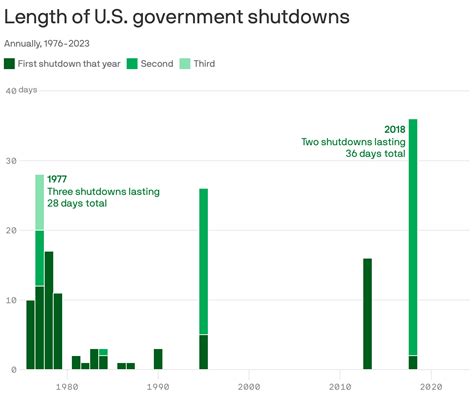The specter of a government shutdown has once again loomed over the United States, this time in the year 2025. As the deadline for passing a new federal budget drew near, tensions rose between lawmakers from different parties, each digging in their heels over key issues. The threat of a shutdown, which would furlough hundreds of thousands of federal employees and halt numerous government services, hung precariously in the balance.
At the heart of the dispute were fundamental disagreements over spending priorities, with Democrats pushing for increased investments in social programs and infrastructure, while Republicans advocated for austerity measures and tax cuts. The debate was further complicated by the introduction of contentious policy riders, including provisions related to immigration reform, gun control, and environmental regulation. As the clock ticked closer to midnight, the likelihood of a shutdown seemed to grow by the hour.
For many Americans, the prospect of a government shutdown evoked a sense of déjà vu, conjuring memories of past standoffs that had similarly brought the nation to the brink of dysfunction. The most recent shutdown, which occurred in 2023, had resulted in significant economic losses and widespread disruption to essential services, including national parks, food assistance programs, and federal law enforcement agencies. As the current crisis unfolded, concerns mounted about the potential consequences for vulnerable populations, small businesses, and the overall stability of the economy.
A government shutdown can have far-reaching consequences, affecting not only federal employees but also the broader economy. In 2023, the shutdown resulted in an estimated $11 billion in lost economic output, with significant impacts on industries such as tourism, construction, and healthcare.
One of the most significant challenges posed by a government shutdown is the impact on federal employees, who would be forced to go without pay or work involuntarily without compensation. This not only creates financial hardship for affected workers but also undermines morale and productivity across the federal workforce. Furthermore, the shutdown would likely exacerbate existing challenges in areas such as veterans’ services, disaster relief, and public health, where government agencies play a critical role in providing support and resources to those in need.
In an effort to mitigate the effects of a shutdown, lawmakers from both parties engaged in marathon negotiating sessions, seeking to find common ground on the most contentious issues. However, as the hours ticked by, it became increasingly clear that a deal would not be reached before the deadline, setting the stage for a protracted standoff with uncertain consequences.
Understanding the Process of a Government Shutdown
- Legislative Gridlock: The process begins with a failure by Congress to pass a new federal budget or a continuing resolution, which would temporarily extend current funding levels.
- Agency Preparations: In anticipation of a shutdown, federal agencies start to prepare by identifying essential personnel and services, which would continue to operate during the shutdown.
- Furloughs and Service Disruptions: Once the shutdown takes effect, non-essential federal employees are furloughed, and many government services are halted, including national parks, passport offices, and federal loan processing.
- Negotiations and Resolution: Lawmakers continue to negotiate, seeking to reach a compromise that would allow for the passage of a new budget or a continuing resolution, thereby ending the shutdown.
As the standoff continued, the economic implications of the shutdown began to manifest, with stocks fluctuating in response to the uncertainty and businesses bracing for potential disruptions to supply chains and government contracts. The situation was further complicated by the upcoming election cycle, with politicians on both sides seeking to capitalize on the crisis to advance their policy agendas and bolster their public image.
In conclusion, the government shutdown of 2025 served as a stark reminder of the deep divisions and challenges facing the United States, where partisan gridlock and ideological differences continue to threaten the functioning of the federal government. As lawmakers struggled to find a way forward, the nation was left to ponder the consequences of a prolonged shutdown and the long-term implications for the economy, federal employees, and the American people.
What is the main cause of a government shutdown?
+A government shutdown occurs when Congress fails to pass a new federal budget or a continuing resolution, which would temporarily extend current funding levels, before the existing budget expires.
How do government shutdowns affect federal employees?
+Federal employees who are deemed non-essential are furloughed during a shutdown, meaning they are not allowed to work and do not receive pay. Essential employees, on the other hand, continue to work but may not receive pay until the shutdown is resolved.
What are the economic consequences of a government shutdown?
+A government shutdown can have significant economic consequences, including lost productivity, decreased consumer spending, and delayed government contracts. According to estimates, the 2023 shutdown resulted in an $11 billion loss in economic output.


